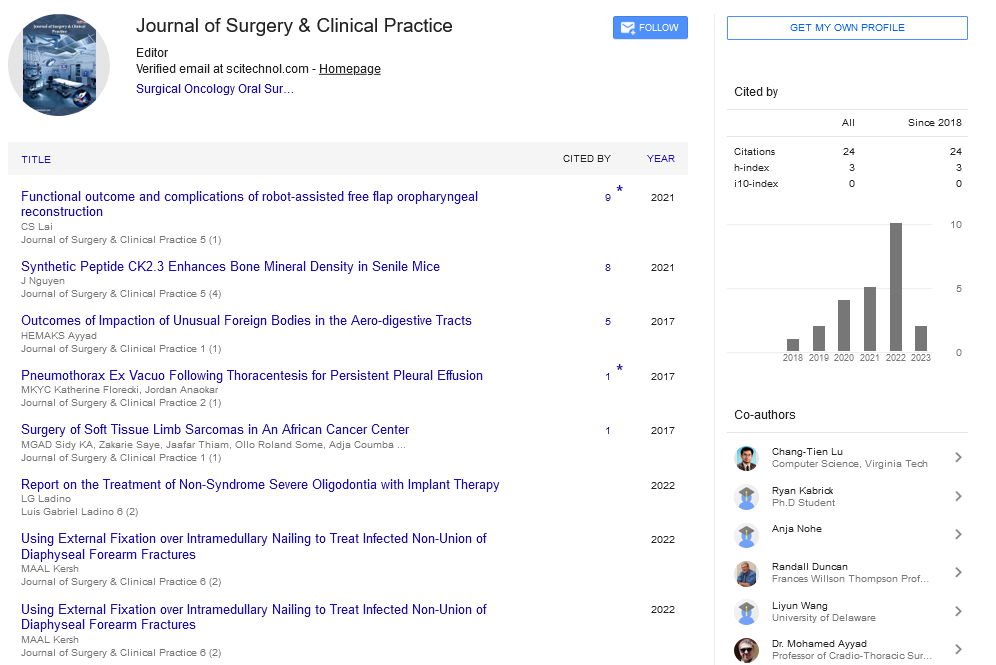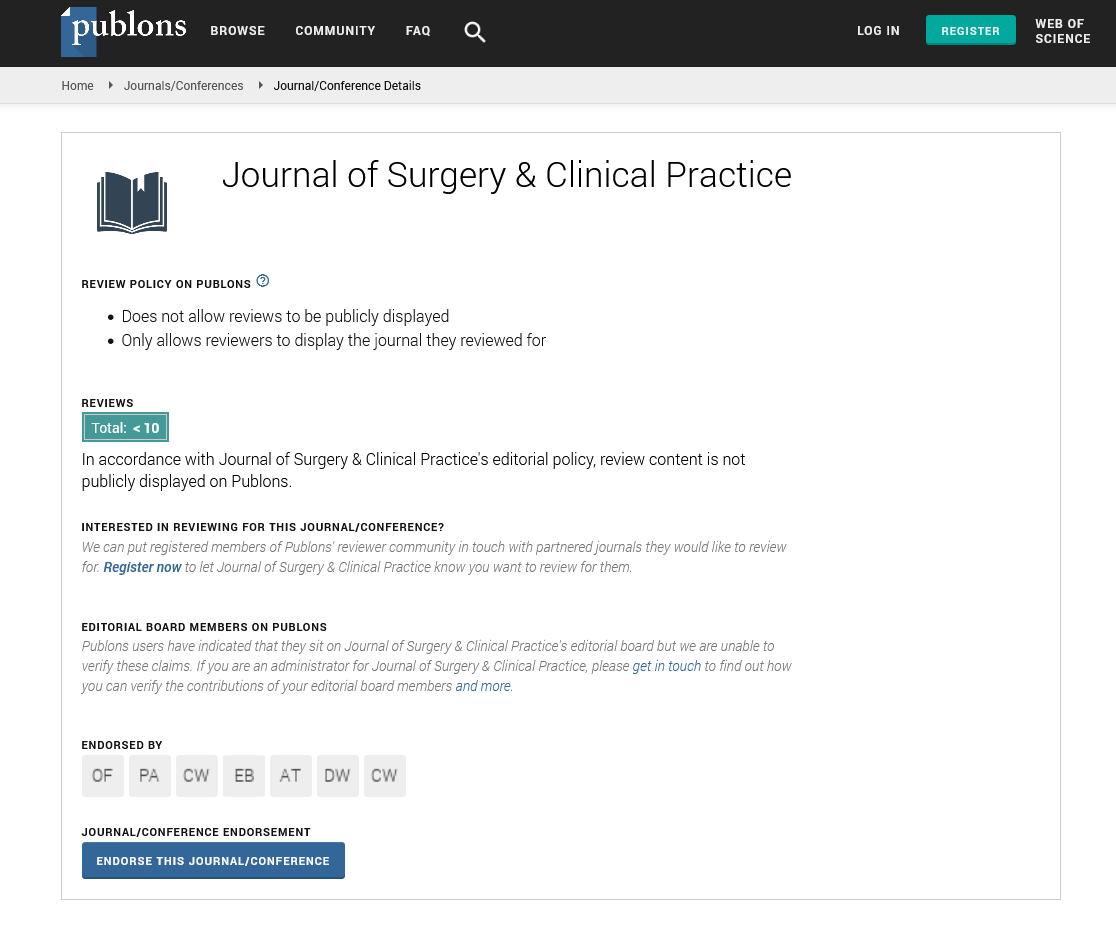Opinion Article, J Surg Clin Prac Vol: 7 Issue: 1
Techniques and Advancements in Surgical Oncology
Hjalmar Santvoort*
Department of Surgery, Lund University, Lund, Sweden
*Corresponding Author: Hjalmar Santvoort
Department of Surgery, Lund
University, Lund, Sweden
E-mail: hjalmar@sant.se
Received date: 22 February, 2023, Manuscript No. JSCP-23-95366;
Editor assigned date: 27 February, 2023, Pre QC No. JSCP-23-95366(PQ);
Reviewed date: 15 March, 2023, QC No. JSCP-23-95366;
Revised date: 22 March, 2023, Manuscript No: JSCP-23-95366(R);
Published date: 29 March, 2023, DOI: 10.35248/JSCP.100373.
Citation: Santvoort H (2023) Techniques and Advancements in Surgical Oncology. J Surg Clin Prac 7:1.
Keywords: Surgical Oncology
Description
Surgical oncology is a medical specialty that focuses on the surgical treatment of cancer. It involves the removal of tumors and other cancerous tissues from the body. Over the years, surgical oncology has undergone significant advancements, and new techniques have been developed to improve patient outcomes. Minimally invasive surgery, robotic surgery, image-guided surgery, cryosurgery, and laser surgery are just a few examples of the advancements in surgical oncology. These techniques have revolutionized the field of surgical oncology, making it possible to treat cancer more effectively and with fewer side effects.
Minimally invasive surgery is also known as laparoscopic surgery, a surgical technique that involves making small incisions in the body instead of large ones. The surgeon then inserts a laparoscope, which is a thin tube with a camera and a light, into one of the incisions. The camera provides a view of the inside of the body, allowing the surgeon to perform the surgery using small instruments inserted through the other incisions. This type of surgery has several advantages over traditional open surgery. It results in less pain, less scarring, and a faster recovery time. It also reduces the risk of infection and other complications associated with open surgery. Robotic surgery is a type of minimally invasive surgery that uses a robotic system to perform the surgery. The surgeon controls the robotic system from a console, which provides a 3D view of the surgical site. The robotic system uses small instruments that are inserted through small incisions in the body. It has several advantages over traditional open surgery and even minimally invasive surgery. It allows for greater precision and control during surgery, resulting in better outcomes for patients. It also reduces the risk of complications and has a shorter recovery time.
Image-guided surgery is a technique that uses images from CT (Computed Tomography) scans, MRI (Magnetic Resonance Imaging) and other imaging techniques to guide the surgeon during surgery. The images are overlaid onto the surgical site, allowing the surgeon to see the exact location of the tumor and other structures. This surgery also has advantages over traditional surgery. It allows for greater precision and accuracy during surgery, reducing the risk of damage to healthy tissue. It also reduces the risk of complications and has a shorter recovery time. Cryosurgery is a technique that involves freezing the cancerous tissue with liquid nitrogen. The frozen tissue is then removed from the body. Cryosurgery is often used to treat skin cancer, prostate cancer, and liver cancer. This has several advantages over traditional surgery. It results in less scarring, less pain, and a shorter recovery time. It also reduces the risk of infection and other complications associated with open surgery. Laser surgery is a technique that uses a laser to remove cancerous tissue. The laser is used to heat and destroy the cancerous tissue, which is then removed from the body. It results in less pain, less scarring, and a shorter recovery time. It also reduces the risk of infection and other complications associated with open surgery.
 Spanish
Spanish  Chinese
Chinese  Russian
Russian  German
German  French
French  Japanese
Japanese  Portuguese
Portuguese  Hindi
Hindi 
